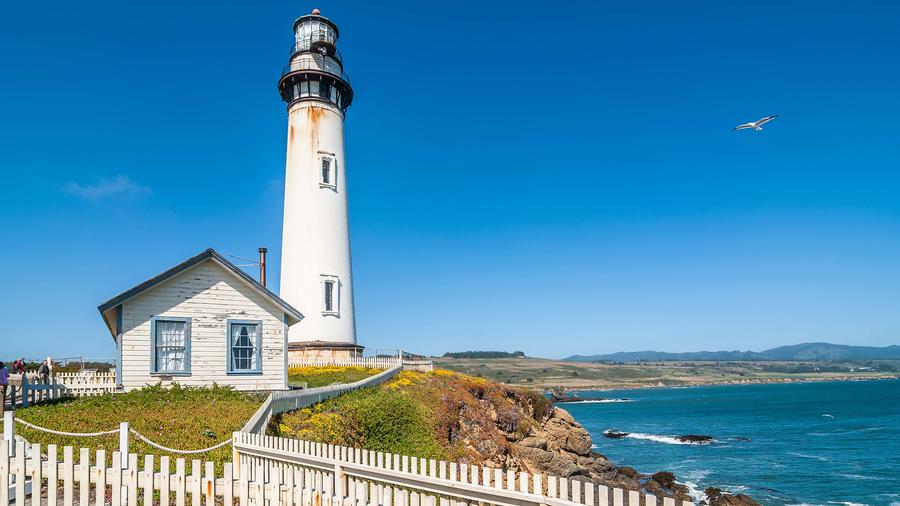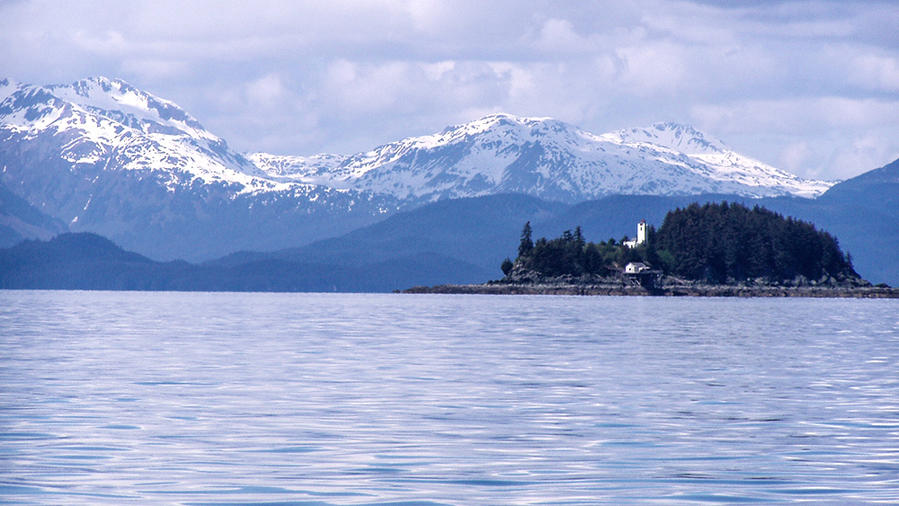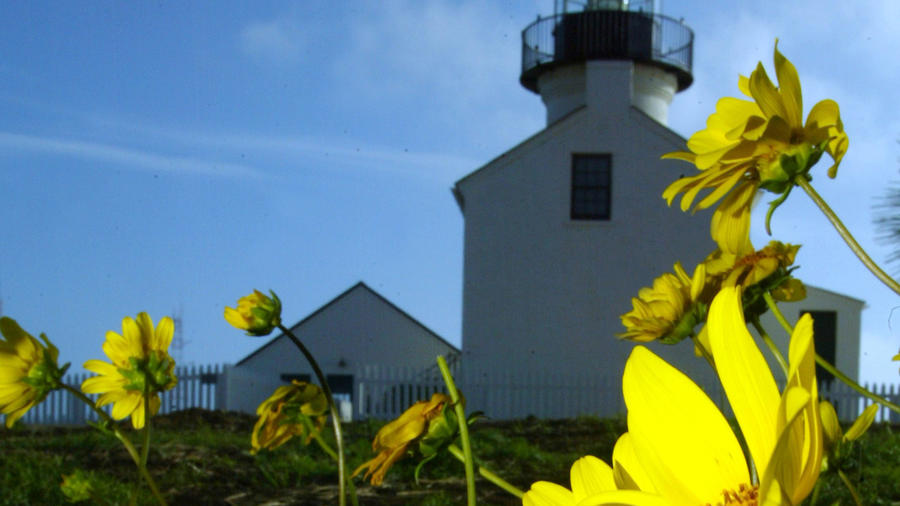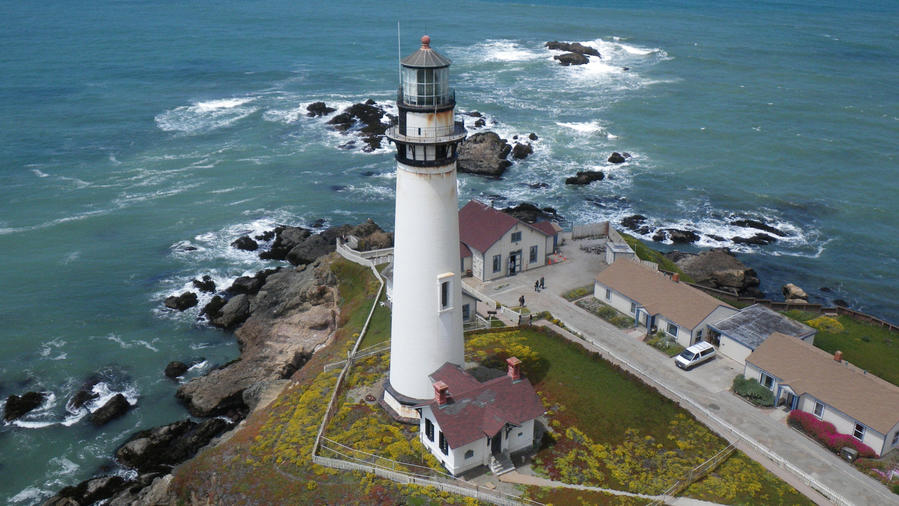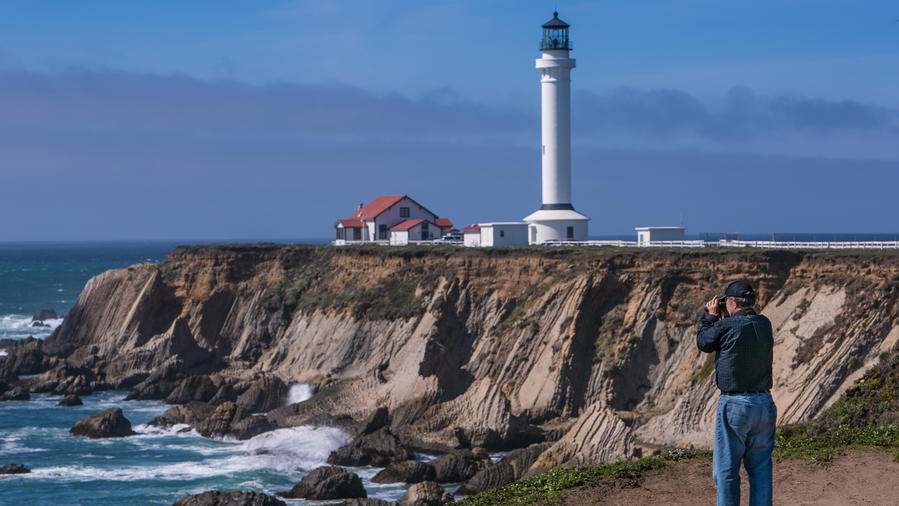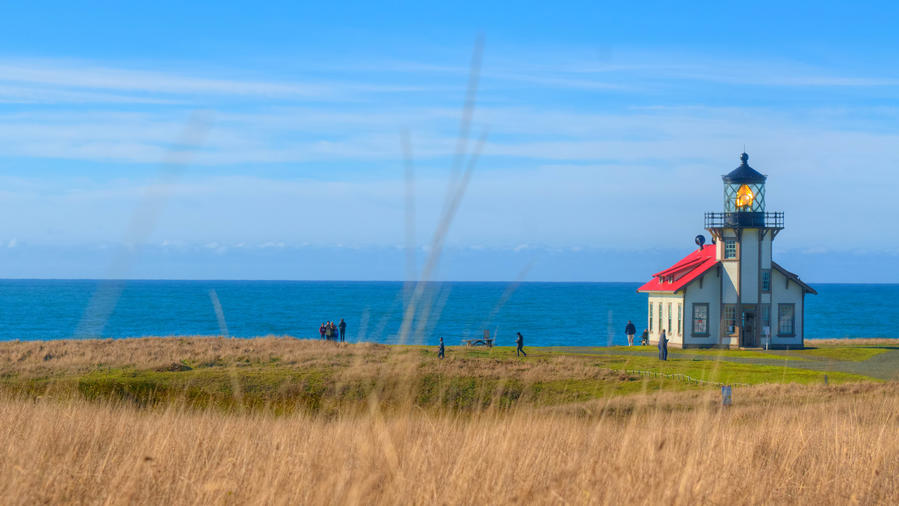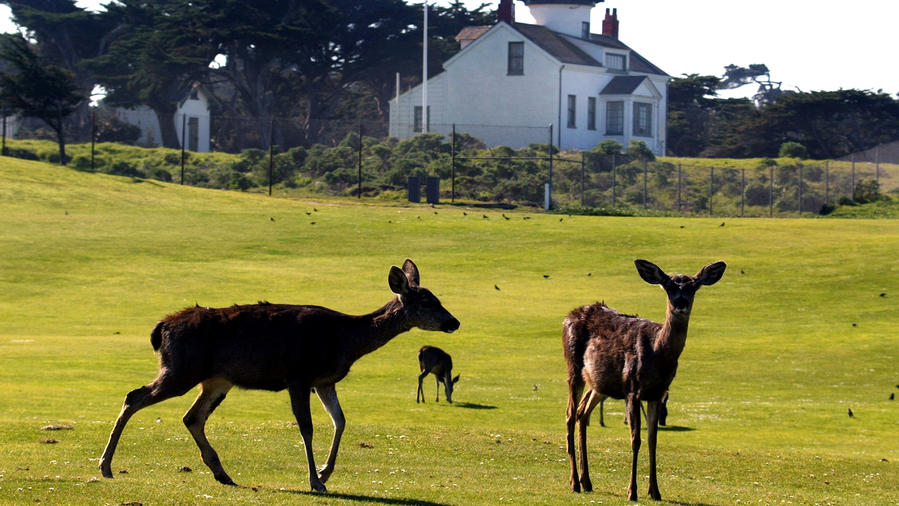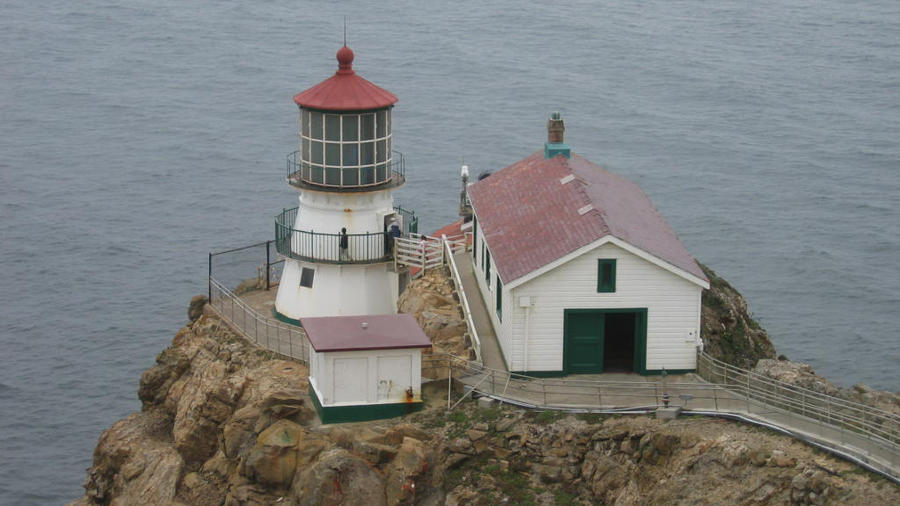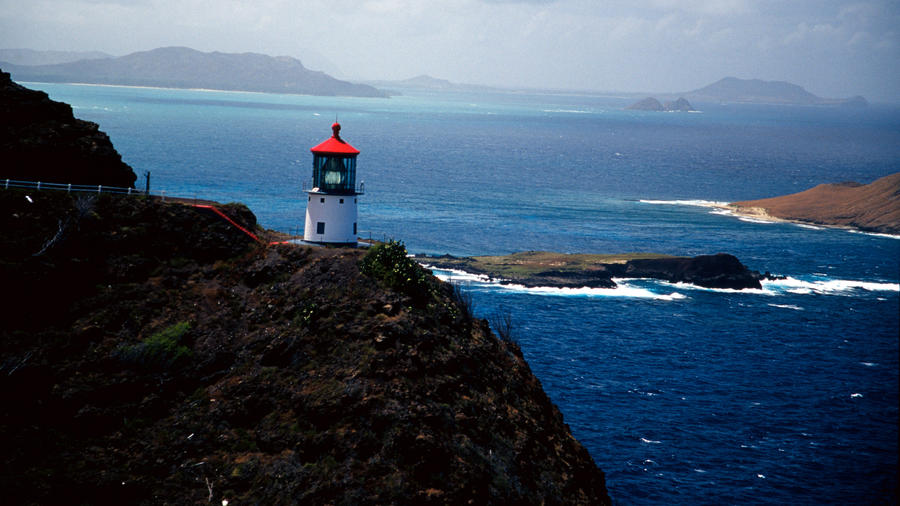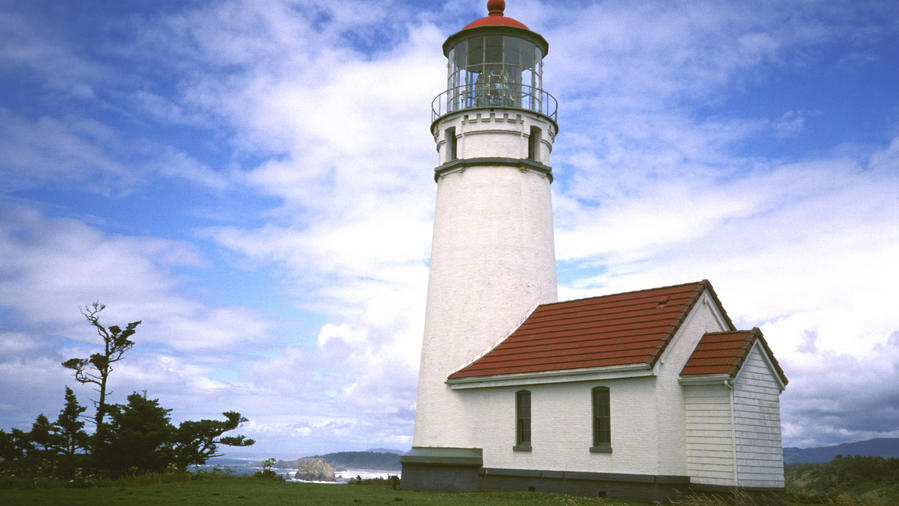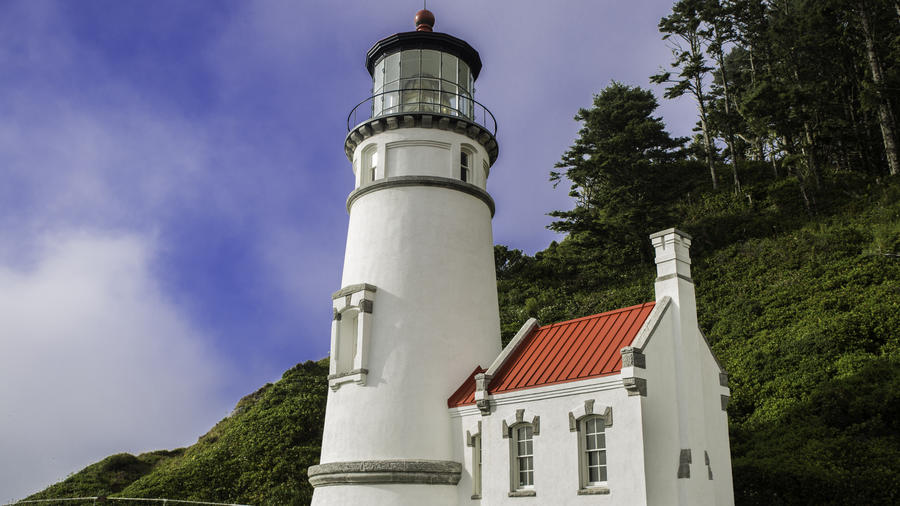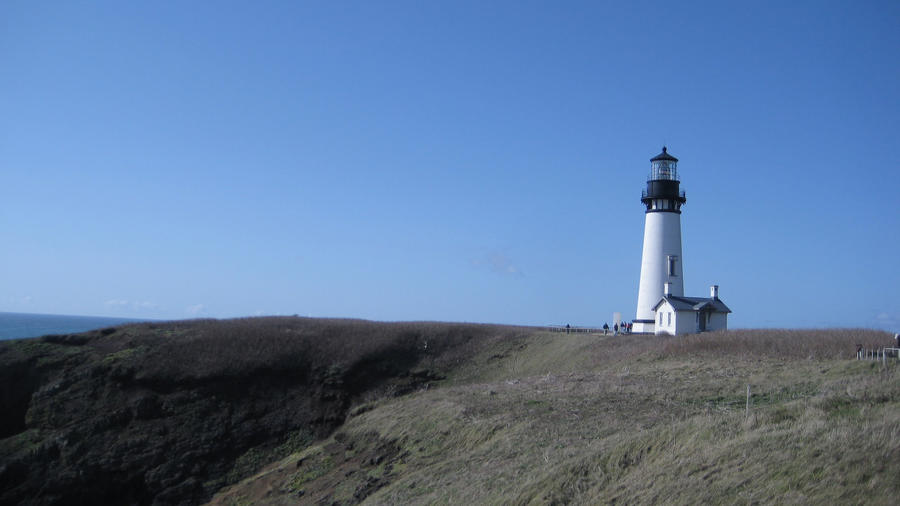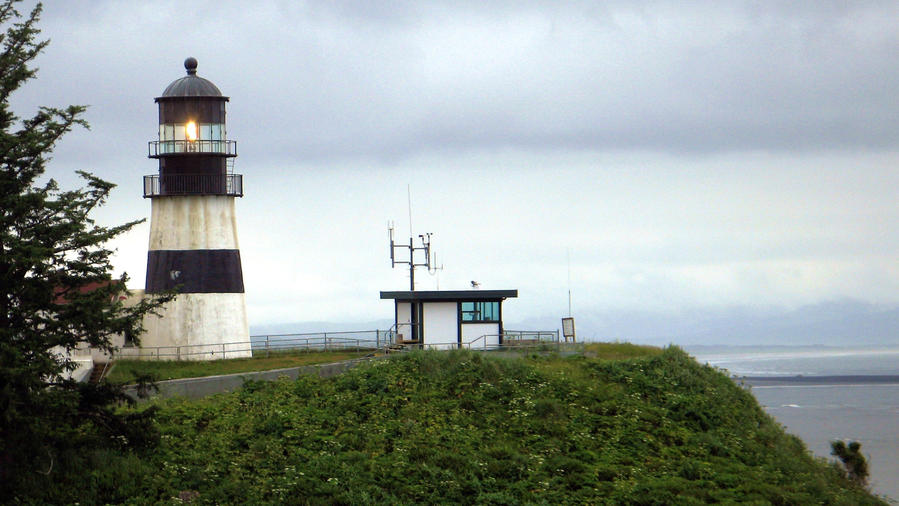Thomas Kurmeier / Getty Images
Bright lights on the West
Lighthouses cast their beams miles out to sea, warning ships of rocky coastlines, jutting promontories, and treacherous shoals and reefs. They also mark the safe entry to long-sought ports and harbors. There are nearly 100 lighthouses on the West Coast of the United States, with almost 50 more beacons in Hawaii and Alaska and most of them leave a light on for visitors. They serve as museums, B&Bs, parks, hiking destinations, and inspirations for painters and photographers of all stripes. And, in many cases, they remain active aids to navigation, still helping ships avoid maritime peril. Sunset shines a light on some of our favorites.
Gillfoto / Wikimedia Commons
Sentinel Island Lighthouse, AK
30 miles northwest of Juneau at the northern entrance to Favorite Channel
Strong currents, coupled with fog, rain, and a rocky shoreline, can make the Inside Passage a navigator’s nightmare—in 1898, the third year of the Klondike Gold Rush, some 300 ships wrecked here. A wooden lighthouse began operating on Sentinel Island in 1902. A concrete Art Deco box, with snazzy pilasters rising above the roofline, replaced the original tower in 1935. The island is accessible by boat or helicopter. With advance arrangements, visitors can overnight here and use the rustic lighthouse as a home base from which to watch bald eagles, humpback whales, and Steller sea lions. Starting at $75; 907-586-5338.
Mark Boster / Los Angeles Times / Getty Images
Old Point Loma Lighthouse, CA
Cabrillo National Monument, San Diego
The 1855 lighthouse in San Diego’s Cabrillo National Monument stands as a silent but salient reminder that there can be too much of a good thing. The higher a lighthouse is perched, the farther out to sea it can shine. This station, sitting on a bluff 422 feet above the Pacific, could throw its light 28 nautical miles. But that same light was too frequently obscured by fog and low clouds. The light was turned off in 1891, replaced by a new lighthouse built nearby but only 108 feet above the ocean. Today, the Old Point Loma Light houses a three-room museum, which includes an original fixed Fresnel lens for its sister lighthouse. From $10; nps.gov/cabr.
David Weese Jr. / Getty Images
Pigeon Point Lighthouse, CA
Off State Route 1, 5 miles south of Pescadero
Pigeon Point was named for the Carrier Pigeon, an American clipper ship that wrecked here in 1853, putting an exclamation mark on the need for a light station. The 115-foot-tall lighthouse has lit a coastal path for ships since 1872. The lithe tower has been closed to visitors since 2001, awaiting repairs. The outlying buildings, however, serve as a museum as well as an active hostel that can house up to 50 visitors. There is even an outdoor hot tub available for rental. Hostel: Dorm rooms from $28, private rooms from $82, norcalhostels.org/pigeon. Lighthouse: parks.ca.gov.
George Rose / Getty Images
Point Arena Lighthouse, CA
Point Arena, off State Route 1
The original Point Arena Lighthouse was flattened by the 1906 earthquake. Less than two years later, the current brick tower made its debut, standing 115 feet tall and employing a first-order Fresnel lens to alert ships to the sandstone headlands that serve as its base. Rent one of four keeper’s homes or the one keeper’s room (from $150; pointarenalighthouse.com/lodging.html) and enjoy a coastal sunset and a lullaby of crashing waves. $7.50; 10-3:30 daily; pointarenalighthouse.com.
Reetom Hazarika / Getty Images
Point Cabrillo Light Station, CA
1.5 miles north of Mendocino on Point Cabrillo Dr.
The Point Cabrillo Light Station State Historic Park features one of the most complete light stations in the country, with the 47-foot lighthouse (which remains, as they say, “an active guide to navigation”); three restored lightkeeper homes (one a museum, the other two available as rentals, starting at $425); the Blacksmith & Carpentry Shop (now the Marine Science Exhibit, with a 300-gallon saltwater aquarium); and three restored outbuildings (two are now rental cottages and the third is a public restroom). The original four-sided Fresnel (FRAY-nel) lens still operates. pointcabrillo.org.
Tom Herde / The Boston Globe / Getty Images
Point Pinos Lighthouse, CA
Pacific Grove
The Point Pinos Lighthouse has illuminated the southern entrance to Monterey Bay since 1855, making it the oldest continuously operating lighthouse on the West Coast. The original third-order Fresnel lens is still in use, having fared better than the original lightkeeper, Charles Layton, who was shot and killed while riding on a posse in pursuit of outlaw Anastacio Garcia. The lighthouse is surrounded by the Pacific Grove Golf Links, a delightful 18-hole layout with bay views and ocean-front holes that is remarkably affordable ($45/player after 2 p.m.). pointpinoslighthouse.org.
Jiang / Wikimedia Commons
Point Reyes Lighthouse, CA
Point Reyes National Seashore
Given that the tip of Point Reyes is one of the windiest spots on the Pacific Coast and the second-foggiest place in North America (a shout-out for Grand Banks, Newfoundland, which is even more socked in), it’s no surprise there has been a light station here since 1870. It took a herculean effort to haul the lens, cast-iron tower, and other materials three miles then lower them 300 feet to the pad that had been dynamited out of the cliff. Today, getting there is slightly less heroic: It requires a .4-mile walk and a descent of 308 steps. nps.gov/pore.
Education Images / UIG / Getty Images
Makapu‘u Point Lighthouse, HI
Oahu
The tower at the southeastern tip of Oahu has served ships at sea for more than a century, with a 115,000-candlepower light that can be seen for 25 nautical miles. It has the largest Fresnel lens—12 feet tall—of any U.S. lighthouse. The one-mile hiking trail to the lighthouse was repaved during a renovation in late 2015 that also added benches and viewing scopes. Pack water, sunscreen, and binoculars—which will help you focus in on the humpback whales that migrate past here between November and April. dlnr.hawaii.gov/dsp/hiking/oahu/makapuu-point-lighthouse-trail.
Education Images / UIG / Getty Images
Cape Blanco Lighthouse, OR
Off U.S. 101, 9 miles north of Port Orford
Set on chalky white cliffs that rise 200 feet above the Pacific, the Cape Blanco Light has warned ships about the perilous offshore reef and islands nearby since 1870, making it Oregon’s oldest standing lighthouse. Cape Blanco employed the state’s first female lighthouse-keeper, Mabel Bretherton, a widowed mother of three who took up her post in 1902. Cape Blanco State Park also offers hiking, horseback riding, and camping. 10–3:30, closed Tuesdays, April to October; enjoyportorford.com/capeblancolighthouse.
Randy Redfield / Getty Images
Heceta Head Lighthouse, OR
Off U.S. 101 between Florence and Yachats
The brightest light on the Oregon coast and one of the most photogenic in the world, the beacon here glows with 2 million candlepower and can be seen 21 miles out to sea. The Keeper’s house is now a B&B (from $125; hecetalighthouse.com); the first floor is now an interpretive center, which features historical photos and documents. $5 parking; 11–3 daily (11-2 in winter); oregonstateparks.org.
Ryancb29 / Wikimedia Commons
Yaquina Head Lighthouse, OR
Off U.S. 101 north of Newport
Some 370,000 bricks were used to build the 93-foot conical tower that was once known as the Cape Foulweather Lighthouse. Paved trails and wooden steps take visitors to the tide pools below. The Sylvia Beach Hotel, a beacon for book lovers, is nearby. Yaquina Head Outstanding Natural Area open 8 to sunset; $7 per vehicle; blm.gov/or/resources/recreation/yaquina/index.php.
loggedout / Wikimedia Commons
Cape Disappointment Lighthouse, WA
Off State 101, in Ilwaco
The Cape Disappointment Lighthouse and its counterpart, the North Head Lighthouse, stand guard over The Graveyard of the Pacific, the turbulent waters where the Columbia River crashes into the Pacific Ocean. More than 2,000 ships and 700 lives have been lost at the Columbia River bar alone. The 53-foot tower was first lit in 1856. Cape Disappointment State Park includes two miles of beaches, 137 standard camping sites, both lighthouses (the North Head Lighthouse is closed for repairs through 2017), and the Lewis & Clark Interpretive Center ($5). $10 park entry, $2.50 tour fee only for North Head Lighthouse (reservations required); parks.wa.gov.
